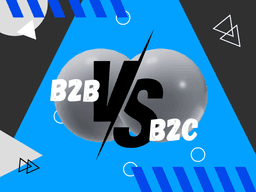/ What is Marketing? Definition, Objectives and Principles
What is Marketing? Definition, Objectives and Principles

What is marketing? Marketing is basically a vital part in any kind of business. Even though every marketing strategy requires a lot of budget, no one can run a business without it.
In this era of intense competition, the company needs the right marketing strategy to win the competition and gain much profit.
What is Marketing?
The definition of marketing is the process of creating and delivering the value of a product or service to meet the needs of the target customers. The ultimate goal of marketing is to increase sales. However, it cannot be done instantly, it requires a process.
As mentioned earlier, marketing is the process of creating and delivering value. This includes creating awareness, building image and reputation, building strong relationships with the audience, converting the audience into buyers, and maintaining relationships with customers to make them loyal.
Marketing Objectives
Marketing strategies and activities have many objectives as per below:
- To increase awareness among the target audience.
- To build a good image for potential customers, employees, and investors.
- To satisfy people's needs.
- To inform customers about everything related to the company.
- To generate new customers.
- To satisfy customers.
- To build strong and long-lasting customer relationships.
- To increase customer loyalty.
- To promote and distribute products or services.
7 Marketing Principles
These marketing principles play an important role in any marketing strategy sequence. Marketing principles are sometimes called marketing mix. It combines 7 techniques to influence the attention of existing and potential customers to the products or services. Here they are:
1. Product
Product is a tangible thing that has benefits, features and quality to meet and satisfy the needs of the customers. This is also true for businesses that sell services.
Make sure your product or service has a competitive advantage to make it stand out in the market. This can be an extra feature, great styles, unique design, simplicity, and so on. To make it stand out, conduct market research using customer surveys, interviews, competitive analysis, or user persona research.
2. Price
Price is the amount customers pay for products or services. However, pricing is not an easy task.
Therefore, you must carefully conduct market research to understand what customers expect to pay for your products or services and what your competitors charge for comparable products or services. Also, remember to include all of your costs and decide what margin you want. This will help you determine the right price.
3. Place
This is where your customers can find and purchase your product or service. It does not have to be physical. In this digital age, it can be a website, e-commerce, or even a social media account.
The key is to make your product or service as easily accessible as possible. This will make the buying process more convenient for the customer. It is usually best to have both online and offline stores. However, you should know best as you are the one who knows your business capability and the needs of your customers.
4. Promotion
Promotion is a set of marketing communication strategy that you use to get wider audience and more customers. This marketing principle includes creating awareness, building good reputation, creating value and finally converting the audience into loyal customers.
There are several types of promotion, including: public relations, email marketing, social media marketing, search engine marketing, and so on. Choose the right one based on your product or service and your brand identity.
5. People
This means the people you are selling to as well as your employees. It is not only the sales and marketing team, but also the production team.
Make sure you train your salespeople on product knowledge, the latest offers, and how to properly treat all potential customers. Brainstorm the best marketing strategy with the marketing team, monitor the production process to ensure quality, and train the customer service team to serve customers perfectly.
6. Process
This includes all business processes from the first step of production to delivery to the customer and after-sales service. This includes all supply chain processes, packaging, promotions, in-store customer service, delivery, and after-sales service.
It is important to make it as smooth and fast as possible because it affects your customers' buying experience and ultimately determines whether they will be your loyal customers or not.
So analyze the current workflow to find the necessary improvements. To make it smoother and faster, you may need to consider automation and optimize internal processes to be more efficient.
7. Physical Evidence
Physical evidence is everything your customers see and experience when they interact with your business. This applies to both product-based businesses (selling physical items) and service-based businesses (promoting the business via website, social media, etc.).
If you have an offline store, check the cleanliness and layout. If you have a website, check the SEO score, design and user interface. If you send the product to the customers, package it carefully with nice and unique design using strong material.
Bottom Line
Marketing is the process of creating and communicating the value of the product or service to the target customers to ultimately increase sales. To create the right marketing strategy, the above seven marketing principles must be carefully considered and developed.
























































